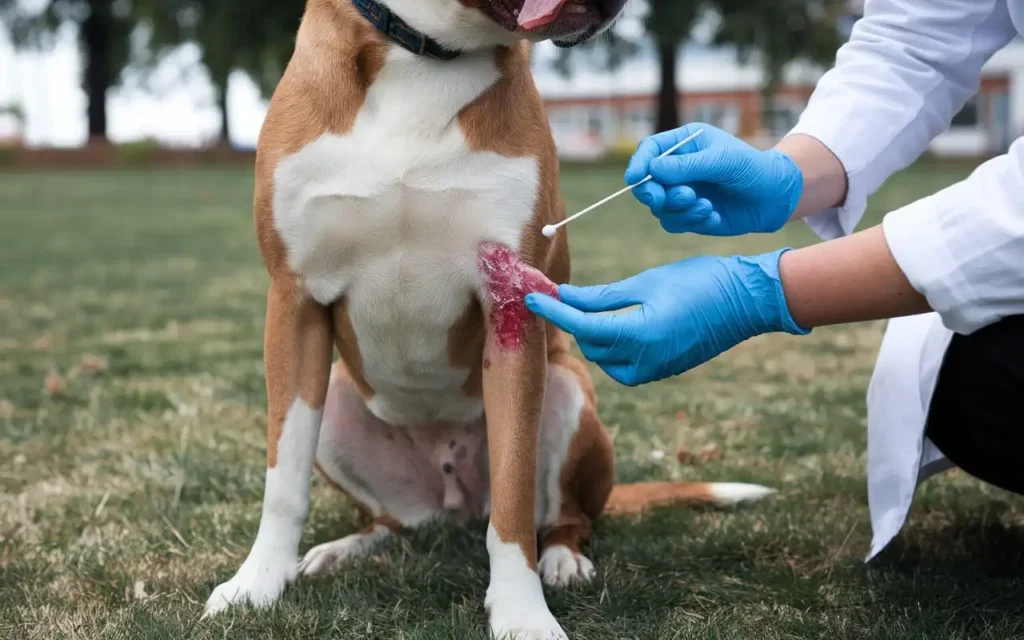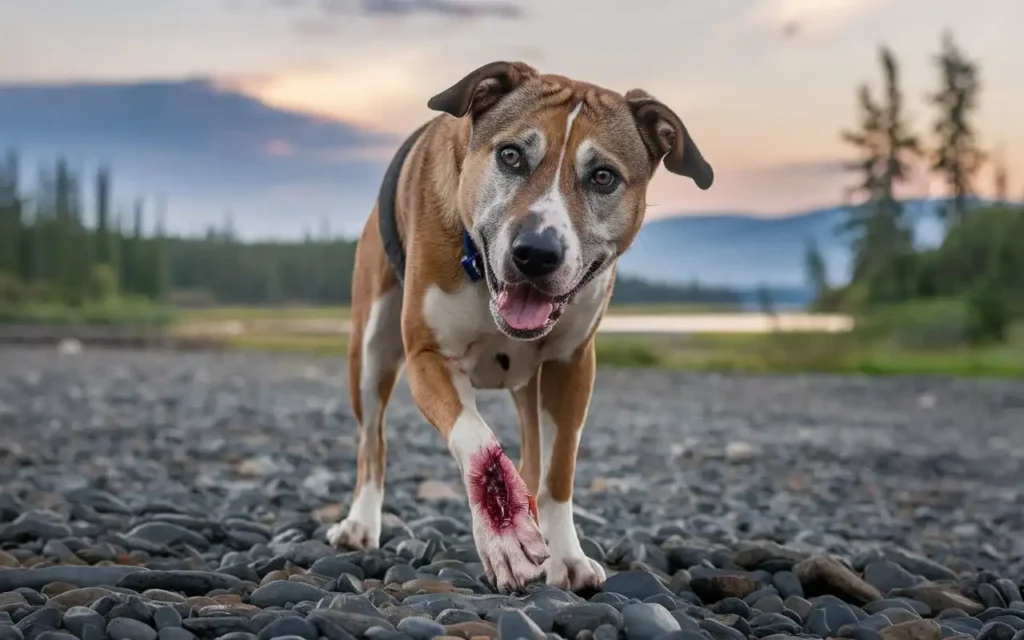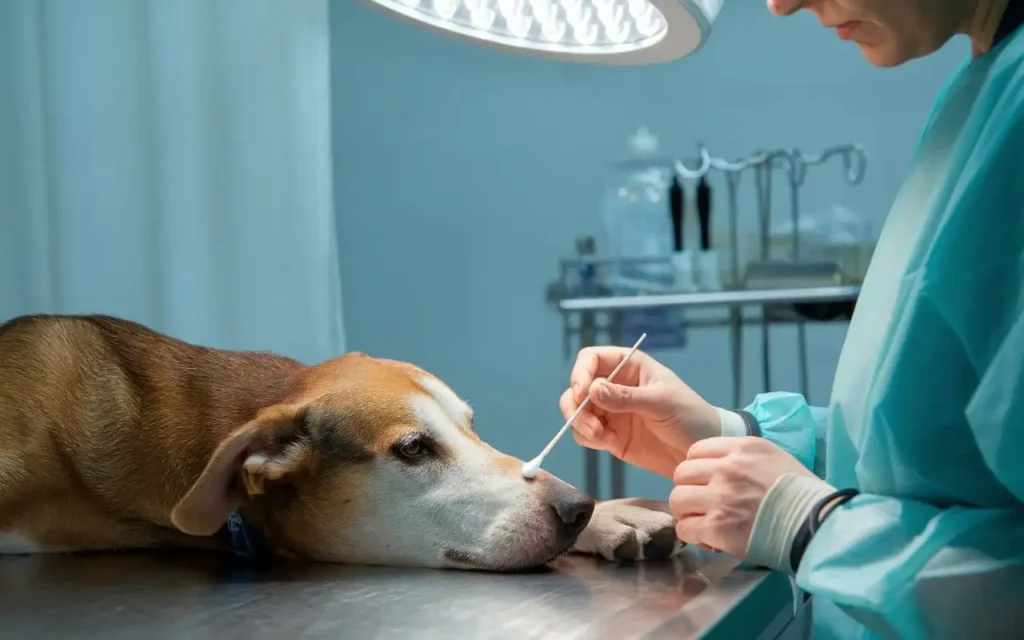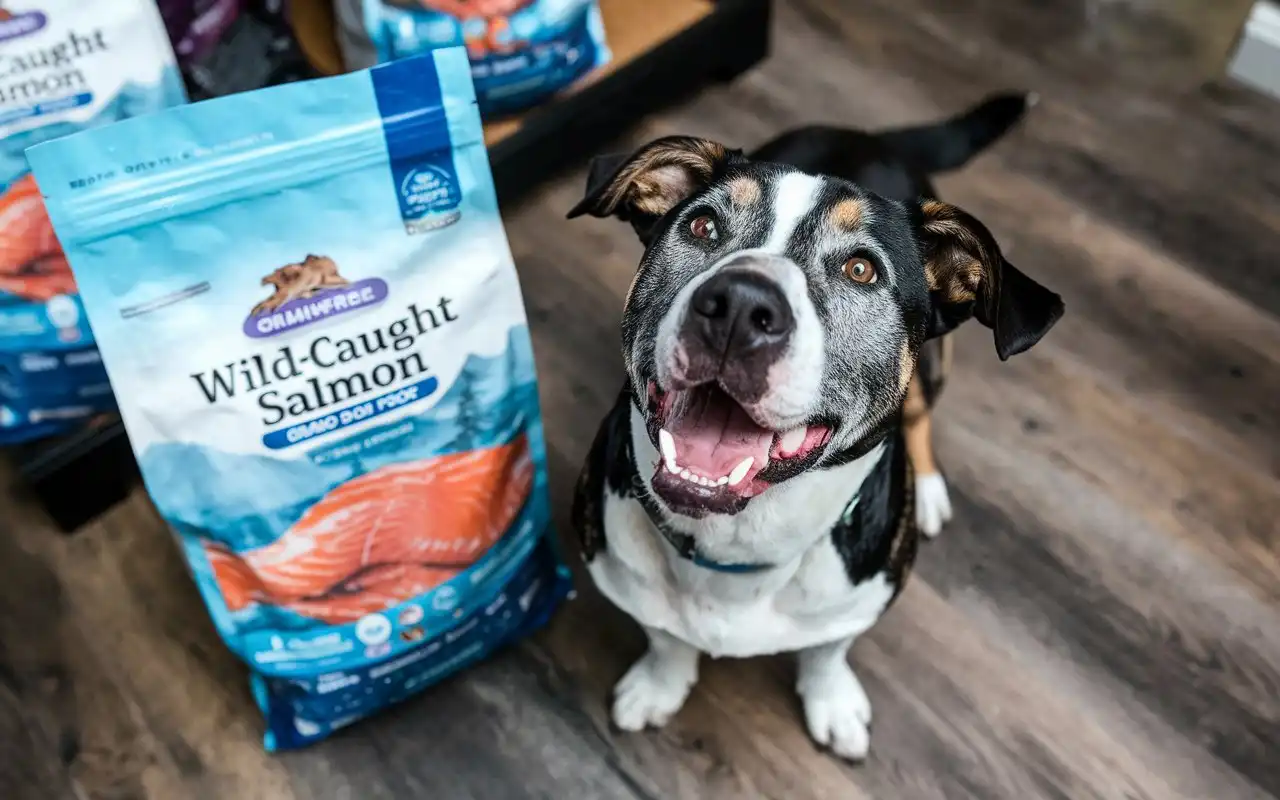When caring for your furry friend, their health and safety are paramount. This is vital when dealing with injuries. One of the most effective treatments for pet wounds is antibiotic ointment for dogs. It prevents infections. It also speeds healing and ensures a full recovery. This article will explore the magic of antibiotic ointment for dogs. We’ll cover all you need to know. This includes proper use and tips for keeping your pet’s wounds clean and healthy. So, whether you’re a seasoned dog owner or a new pet parent, read on. We’ll show you how to keep your dog’s wounds in great shape.
Table of Contents

Why Pet Wound Care Matters
The Importance of Immediate Care
Due to their active, curious nature, dogs are prone to injuries. So, immediate wound care is critical. No matter how severe the wound, prompt attention is vital. Whether it’s a minor scratch or a serious injury, it matters. Immediate treatment of wounds reduces the risk of infection, eases pain, and speeds healing. Even small wounds can turn critical if neglected. Bacteria and debris may enter the wound, causing infections that can spread. In severe cases, infections can lead to complications like abscesses or systemic infections.
Common Types of Dog Wounds
Knowing the types of wounds your dog may get helps you decide what to do. Common dog wounds include:
- Scratches, often from playful interactions or outdoor activities, are usually superficial. But they still need cleaning and monitoring for infection.
- Bite wounds, from fights with other animals, are very dangerous. They can insert bacteria deep into the tissues. This requires thorough cleaning and often veterinary care.
- Puncture wounds from sharp objects like nails or sticks can be deceptive. They may look small on the surface. But, they often cause deep tissue damage. This makes them prone to infection.
- Abrasions caused by scraping against hard surfaces are usually shallow. But they still need cleaning and protection from contamination.
For all these wounds, the first step is to clean the area with mild antiseptics.Next, apply an antibiotic ointment to prevent infection. Covering the wound may be necessary. This is true if the dog tends to lick or scratch it. For deep or severe wounds, or signs of infection, consult a vet for treatment.
What is antibiotic ointment for dogs?
Antibiotic ointment for dogs is a topical treatment. It prevents and treats bacterial infections in minor cuts, scrapes, and wounds. These ointments, intended for canine skin, are designed to. They construct a guarding shield over the lesion. It prevents bacteria from entering and promotes healing. Antibiotic ointments keep harmful bacteria at bay. This reduces infection risk. It allows wounds to heal faster and better.
Key Ingredients in Antibiotic Ointment
Common ingredients found in antibiotic ointments for dogs include:
- Neomycin: An antibiotic that kills bacteria on the skin.
- Polymyxin B: Another antibiotic that fights a broad spectrum of bacteria.
- Bacitracin: Known for its ability to prevent bacterial infections in minor wounds.
These ingredients work together. They fight infections, reduce inflammation, and relieve discomfort. These ointments work for minor wounds. But, for serious injuries, consult a vet. Also, check for infection signs like swelling, redness, or discharge.

How antibiotic ointment works on wounds
Protective Barrier Against Bacteria
Antibiotic ointment forms a barrier over the wound. It prevents bacteria, dirt, and debris from entering. This is vital in outdoor areas. Open wounds are more prone to contamination there. The ointment keeps out bacteria. This reduces the risk of infection. It ensures the wound heals without complications.
Moisture for Faster Healing
Antibiotic ointment protects and keeps the wound moist. This speeds up healing. Moist wounds heal faster than dry ones. Moisture helps cell regeneration and prevents scabs, which can slow healing. The ointment soothes the skin and reduces itching. It prevents the dog from licking or scratching the wound.
Antibacterial Action
Key ingredients like neomycin, polymyxin B, and bacitracin kill surface bacteria. They promote faster healing and protect the wound from infection.
Benefits of Using Antibiotic Ointment for Dogs
Preventing Infection
A key benefit of antibiotic ointment for dogs is its ability to prevent infections. Open wounds, like cuts, scrapes, or punctures, are prone to bacteria. If untreated, these bacteria can multiply. They may cause infections, swelling, redness, and pus. In severe cases, infections can spread and cause systemic issues. This may require advanced medical intervention. Antibiotic ointments block bacteria from entering the wound. This helps to prevent complications.
Speeding Up Healing
Antibiotic ointments promote faster healing by maintaining a moist environment around the wound. Moisture is key to efficient wound healing. It helps new skin cells grow without forming scabs, which can delay recovery. The ointment keeps the wound from drying out and protects it from irritants. This lets your dog heal faster.
Reducing Inflammation and Pain
Many antibiotic ointments fight bacteria. They also reduce inflammation and soothe irritation. This is especially important for wounds that are swollen, red, or painful. The ointment calms inflammation and relieves discomfort. It makes healing easier for your dog, reducing pain while promoting recovery.
How to Apply Antibiotic Ointment for Dogs
Step-by-Step Guide for Safe Application
- Clean the Wound. Use a mild antiseptic or saline solution to clean the wound. It will remove dirt, debris, and bacteria. Avoid using harsh chemicals or alcohol, as these can irritate the wound and delay healing. Pat the area gently with sterile gauze or a clean cloth to ensure it’s thoroughly cleaned.
- Dry the Area. After cleaning, dry the wound gently using a clean, soft cloth or gauze. Dry the area. Ointment on a wet wound can trap moisture and raise the infection risk.
- Apply the Ointment. Squeeze a small amount of dog antibiotic ointment onto your finger or a cotton swab. Gently apply a thin layer over the wound, ensuring that it is evenly distributed. Avoid using too much, as this could clog the wound or prevent it from healing efficiently.
- Bandage the Wound (if necessary). If the wound is in a dirty area or if the dog might lick off the ointment, cover it with a clean bandage. Ensure the bandage is secure but not too tight to allow proper circulation.
Dos and Don’ts of Applying Antibiotic Ointment
Do check the wound daily. Check for signs of healing, such as reduced redness, swelling, or discharge. If your pet’s wound is infected or not healing, contact your vet.
Do apply a thin layer of ointment. A small amount will protect the wound. It won’t clog it or block airflow, which is needed for healing.
Don’t use human antibiotic ointments unless recommended by a veterinarian. Some human formulations contain ingredients like hydrocortisone. They can be toxic or harmful to dogs if ingested or absorbed through their skin.

When to Use Antibiotic Ointment for Dogs
Ideal Scenarios for Using Ointment
Antibiotic ointment is best for minor wounds, like small cuts and scrapes. These are common injuries dogs may experience during outdoor activities or rough play. In such cases, antibiotic ointment helps. It prevents infections, promotes healing, and protects the wound. It is useful for injuries that aren’t deep or severe. They don’t need stitches or advanced care. But, they need basic care to prevent complications.
Situations Where a Vet Is Needed
For serious injuries, like deep cuts and puncture wounds, a vet is needed. This is especially true for wounds with significant bleeding. If a wound shows signs of infection, seek a vet right away. Look for pus, swelling, increased redness, or a foul odor. Antibiotic ointment can’t treat severe infections or underlying tissue damage. A vet may need to clean the wound or prescribe antibiotics. They may also suggest other treatments to ensure proper healing. Always err on the side of caution and consult a vet if you’re uncertain about the severity of your dog’s injury.
Side Effects and Precautions
Allergic Reactions
Some dogs may rarely have allergic reactions to ingredients in antibiotic ointments. Allergic reactions can cause excessive itching, redness, swelling, or hives near the wound. Your dog might also start licking or scratching the wound more frequently. Rarely, the reaction could spread beyond the wound. It may cause discomfort or skin irritation. If you see any of these symptoms, stop using the ointment. Consult your vet for an alternative treatment.
Overuse of antibiotic ointment
Overusing antibiotic ointment can lead to potential issues, particularly antibiotic resistance. This occurs when bacteria become less responsive to the medicine. It reduces the ointment’s effectiveness in future treatments. Overuse may disrupt the skin’s healing by blocking airflow to the wound. Apply the ointment as directed on the label or by your vet. Usually, that’s no more than 1-2 times a day. If unsure about the ointment’s use or your dog’s healing, consult your vet. This will avoid complications and ensure proper care.

Best Antibiotic Brands
Here are some of the best antibiotic ointment brands commonly recommended for dogs:
Neosporin (Vet-Approved)
Neosporin is a popular over-the-counter antibiotic ointment for minor cuts and scrapes. You can use the human version with approval from a vet. But, it’s important to check with your vet to ensure it’s safe for your dog.
Vetericyn Plus Antimicrobial Hydrogel
Specifically formulated for pets, Vetericyn is highly recommended by veterinarians. It helps clean wounds, prevents infection, and promotes faster healing. It’s safe for all types of wounds and skin irritations.
Sulfodene 3-Way Ointment
This ointment is for dogs. It heals wounds, cuts, scrapes, and skin infections. It’s known for providing relief from pain and itching while preventing infection.
Terramycin Antibiotic Ointment
Terramycin is often recommended for treating dog eye infections. It can also be used for other minor wounds. It’s a broad-spectrum antibiotic ointment available by prescription.
Zymox Topical Cream with Hydrocortisone
Zymox has antimicrobial properties. It contains hydrocortisone to reduce itching and inflammation. It is especially effective for infections caused by bacteria, viruses, and fungi.
These brands are safe and effective for treating minor wounds and preventing infections in dogs. But, always consult your vet to find the best option for your pet.
Best Wound Cleaner
Here are some of the best dog wound cleaners recommended for safely cleaning your dog’s wounds:
Vetericyn Plus Antimicrobial Wound and Skin Care
A highly recommended product, Vetericyn is a non-toxic, antimicrobial solution. It cleans and disinfects wounds. It’s safe for all skin types and can be used on a variety of wounds, including cuts, scrapes, and abrasions.
Banixx Pet Care
Banixx is an alcohol-free and sting-free wound cleaner, making it comfortable for your dog. It’s effective against a wide range of bacterial and fungal infections, making it suitable for treating wounds and hot spots.
Nutri-Vet Antimicrobial Wound Spray for Dogs
Nutri-Vet’s wound spray is specially formulated to clean and disinfect cuts, scrapes, and abrasions. It also helps prevent infection, making it a great addition to your dog’s first aid kit.
Curaseb Antiseptic Spray
Curaseb is a veterinary-grade antiseptic spray. It treats and cleans skin infections, wounds, and irritations. It’s also helpful for treating hot spots and reducing inflammation.
Miracle Care Wound Care Spray
This affordable wound care spray is effective at cleaning minor cuts, scrapes, and abrasions. It’s easy to apply and is known for being gentle on sensitive skin.
Each of these wound cleaners is an easy, effective way to clean your dog’s injuries before applying antibiotic ointment. This ensures the wound heals without complications. Always consult with your vet for specific recommendations.
Store Antibiotic Ointment For Dogs
Proper storage of antibiotic ointment is crucial to maintaining its effectiveness. Here’s how to store it safely:
Keep in a cool, dry place
Store the ointment in a cool, dry area away from direct sunlight, heat, or moisture. Extreme temperatures can reduce its effectiveness. A cupboard or drawer at room temperature is ideal.
Avoid Freezing
Do not store the ointment where it could freeze, like in a garage or refrigerator (unless the product instructions say otherwise).
Secure Lid Tightly
Always ensure the cap or lid is securely fastened after use. This prevents contamination and helps maintain the ointment’s shelf life.
Store away from pets and kids.
Store the ointment where your dog or children can’t access it. This will prevent accidental ingestion.
Check Expiration Date
Regularly check the expiration date. Discard any expired ointment, as it may lose its effectiveness over time.
These steps will keep your antibiotic ointment safe and effective for treating your dog’s wounds.

Conclusion
Antibiotic ointment for dogs is a must for any pet first-aid kit. It protects against infections and speeds up healing for minor cuts and scrapes. It forms a barrier and keeps the wound moist. This helps prevent bacteria from causing complications. It’s especially useful for active dogs, ensuring small injuries don’t worsen. However, we must know when to seek a vet’s care. This is vital for deep wounds, heavy bleeding, or signs of infection. Antibiotic ointment helps your dog’s recovery if used properly. It will get them back to their playful self quickly.







Pingback: Antibiotic Eye Drops for Dogs: 5 Surprising Benefits
Pingback: Cat Wound Care 101: Essential Tips for Cat Lovers